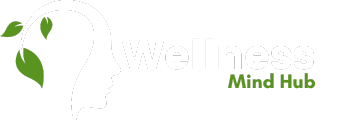Table of Contents
Foot reflexology is an ancient practice that involves applying pressure to specific points on the feet to promote overall health and well-being. By understanding reflexology of feet chart, you can learn how different areas of the foot correspond to various parts of the body. This guide will help you navigate these charts and explore the benefits of reflexology.
Key Takeaways
The Basics of Foot Reflexology Of Feet Charts
Understanding Reflexology Zones
Foot reflexology charts map out various pressure points on the foot, which are supposed to be energetically connected to other areas in the body. These charts divide the foot into different zones, each corresponding to specific body parts. Understanding these zones is crucial for effective reflexology.
How Reflexology Points Correspond to Body Parts
Each part of the foot represents a different organ or body part. For example, the tips of the toes are linked to the head and brain, while the arch of the foot is connected to the liver, pancreas, and kidneys. By applying pressure to these points, you can potentially improve the function of the corresponding body parts.
The Role of the Nervous System in Reflexology
Reflexology works with the central nervous system through nerve endings in the feet. When you apply pressure to specific points, it can trigger responses in other parts of the body. This interaction with the nervous system is what makes reflexology effective for relieving various ailments.
Reflexology is not just about the feet; it’s about the whole body. By understanding the connections between foot zones and body parts, you can use reflexology to promote overall health and well-being.
How to Read a Foot Reflexology Chart

Learning to read a foot reflexology chart can be a rewarding experience. These charts are colorful and detailed, showing how different parts of the foot correspond to various body parts. Understanding these connections can help you apply pressure to specific areas to promote healing and well-being.
Common Pressure Points and Their Benefits
Pressure Points for Head and Neck Relief
Applying pressure to specific points on your feet can help relieve headaches and neck pain. For instance, the tips of your toes are linked to your head and brain. Massaging these areas might help reduce headaches. Similarly, the base of your pinky toe is connected to your neck, and applying pressure here can ease neck tension.
Digestive System Pressure Points
Certain foot pressure points are believed to aid digestion. The arch of your foot corresponds to your abdomen. By massaging this area, you might help improve your digestive health. Additionally, the inner side of your ankle is linked to the lymph glands and intestines, which can also support digestion.
Points for Reducing Stress and Anxiety
Foot reflexology can be a great way to reduce stress and anxiety. The middle area of your foot is connected to your chest and lungs. Massaging this area can help you breathe easier and feel more relaxed. The outer side of your foot is linked to your arms and legs, and applying pressure here can help release tension in these areas.
Reflexology is a complementary therapy that uses pressure points on the feet to benefit other parts of the body. It’s a natural way to help your body heal and balance itself.
By understanding and using these pressure points, you can take steps towards better health and well-being.
Techniques for Effective Reflexology
Using the Thumb-Walking Technique
The thumb-walking technique is a fundamental method in foot reflexology. It involves using the side of your thumb to apply pressure in a crawling motion along the foot. This technique helps stimulate various reflex points effectively.
Applying the Right Amount of Pressure

When practicing foot reflexology, it’s crucial to apply the right amount of pressure. Too much pressure can cause discomfort, while too little may not be effective. A good rule of thumb is to apply firm but gentle pressure, ensuring it feels comfortable for the person receiving the treatment.
Combining Reflexology with Other Therapies
Combining reflexology with other self-care practices can enhance its benefits. For instance, incorporating foot massage, skincare, and personal grooming routines can create a holistic approach to well-being. Reflexology can also complement other therapies like aromatherapy or meditation, providing a more comprehensive self-care experience.
Reflexology is a gentle, non-invasive therapy that encourages the body to balance and heal itself. It involves applying finger or thumb pressure to specific points on the hands and feet.
Tips for Beginners
- 1. Start Slow: Begin with light pressure and gradually increase as you become more comfortable.
- 2. Use a Chart: A foot reflexology chart can help you locate the correct pressure points.
- 3. Practice Regularly: Consistency is key to mastering reflexology techniques.
- 4. Seek Professional Guidance: If you’re unsure, consulting a trained reflexologist can provide valuable insights.
Differences Between Left and Right Foot Charts
Each foot corresponds to different parts of the body. The left foot typically reflects the left side of the body and all organs found there, while the right foot corresponds to the right side. Understanding these differences can help you target specific areas more effectively.
Identifying Key Areas on the Chart
Key areas on a foot reflexology chart include the toes, which correspond to the head and neck, and the ball of the foot, which reflects the heart and chest. Familiarizing yourself with these areas can enhance your reflexology practice.
Potential Benefits of Foot Reflexology
Physical Health Benefits
Foot reflexology is known for its physical health benefits. By applying pressure to specific points on the feet, it can help with various issues:
Mental and Emotional Benefits
Reflexology isn’t just about physical health; it also offers mental and emotional benefits:
Scientific Evidence and Studies
While more research is needed, some studies support the benefits of foot reflexology:
Reflexology is a holistic health practice that has been around for centuries, offering a range of benefits from pain relief to improved mental well-being.
Whether you’re looking to manage pain, improve digestion, or reduce stress, foot reflexology can be a valuable addition to your wellness routine.
Precautions and Contraindications

Who Should Avoid Reflexology
Reflexology involves applying pressure to specific parts of your feet, so it’s usually not as gentle as a good ol’ massage. For that reason, if you’re pregnant, or have certain medical conditions, this treatment might not be right for you. Avoid foot reflexology if you have any of the following conditions:
If you’re not sure, it’s always a good idea to talk with your doctor before trying foot reflexology.
Possible Side Effects
After a reflexology session, most people experience a sense of well-being and relaxation. However, side effects can occur. These include:
Reflexologists believe that these side effects are part of the healing process and are usually temporary.
Consulting a Professional Before Starting
Before your first session, talk with your reflexologist about what level of pressure feels comfortable and manageable to you. It is advisable to avoid the surgical area until it has healed. You should consult with your doctor to find out when it is safe. If you’re pregnant, consult a doctor before trying reflexology. There are concerns associated with foot reflexology and stimulating labor.
Conclusion
Foot reflexology is a fascinating practice that connects different parts of the body through pressure points on the feet. By understanding and using a foot reflexology chart, you can potentially improve your overall well-being. While it might seem complex at first, with a bit of patience and practice, you can learn to identify and stimulate these points to help with various health issues. Always remember to consult with a professional before starting any new health practice, especially if you have existing health conditions. Reflexology offers a unique way to explore the body’s interconnectedness and can be a valuable addition to your wellness routine.
Frequently Asked Questions
What is foot reflexology?
Foot reflexology is a type of therapy where pressure is applied to specific areas on the feet. These areas, called reflex points, are believed to correspond to different parts of the body. The goal is to promote health and well-being.
How does a reflexologist know where to apply pressure?
A reflexologist uses a foot reflexology chart to identify reflex points on the feet. By feeling for tightness or firmness in these areas, they can determine where there might be issues in the corresponding parts of the body.
Can foot reflexology be painful?
Yes, it can be. Some pressure points might hurt during a session, especially if there’s congestion in the corresponding area of the body. However, repeated sessions often reduce this pain as the congestion clears up.
Are there any benefits to foot reflexology?
Yes, foot reflexology is said to help with various issues like reducing anxiety, easing headaches, improving digestion, and promoting relaxation. Some small studies support these benefits, but more research is needed.
Who should avoid foot reflexology?
People who are pregnant, have foot injuries, or have a history of foot conditions should avoid foot reflexology. It’s always best to consult a healthcare professional before starting any new therapy.
How do I start reading a foot reflexology chart?
Begin by familiarizing yourself with the basic areas on the chart. Learn which parts of the foot correspond to different body parts. Practice identifying these areas and applying gentle pressure to get a feel for it.














Leave a Review